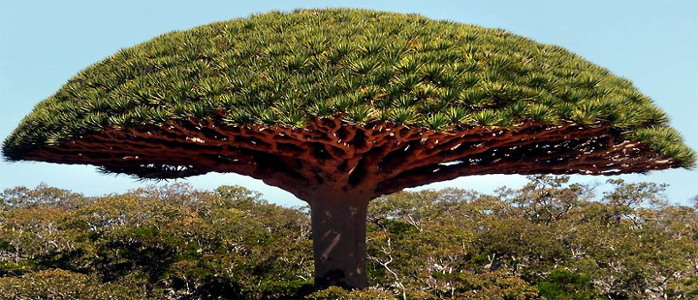What is it?

Sangre de Grado, also known under name of „dragon’s blood” is a natural remedy, known for many centuries with wide variety of applications and is used by tribes from Amazon. Indigenous inhabitants of Peru use this red resin to cure wounds, skin ulcers, abrasions, blisters, scratches, cuts, bites or stings.
Once applied on any of those places a dark protective layer is being created quickly and bleeding, itching and pain stops within few minutes. Swelling, redness and pain are reduced, and wound healing is greatly accelerated through assisting in production of collagen. Population of Amazon use Sangre de Grado orally in the diluted form with gastritis, gastric ulcers, infections of the gastrointestinal tract, colitis, and to get rid of parasites and to seal the hole in the intestinal wall, for instance caused by fungi or parasites.
How is it harvested?

Sangre de Drago is a tall tree which grows in rainforests of Amazon. Red, liquid resin is being harvested by cutting into a tree’s bark in a similar way as it is being done when harvesting natural rubber. Bark of the tree is cut in the shape of a V, so that the juice flows down and then is harvested.
Effects and benefits
Dragon's blood is an excellent anti-inflammatory agent, both for external and internal use. It can be used for the treatment of gastric ulcers, chronic gastritis, inflammation of the skin, cirrhosis of the liver and rheumatic diseases. It also helps in the treatment of acne, and strengthens the immune system. The resin has long proved its usefulness in case of diarrhea, ulcers and bleeding. It is also used in the form of eye drops, mouthwash and toothpaste. It became also known remedy for inhibiting bleeding during childbirth and heavy menstrual bleeding. In China Sangre de Grado was used for the treatment of cervical cancer.
 |
Other properties:
|
Ingredients Sangre de Drago
Sangre de Drago contains alkaloids, particularly potent ingredients - taspine (an anti-inflammatory, promotes healing of wounds, ulcers, used in the treatment of dermatoses, eczema and herpes), protective polyphenols and other valuable compounds. Among the components the oligomers can be found as well as, lignans, dimetylocedruzyne (anti-inflammatory and regenerative), diterpenes (anti-inflammatory and antibacterial), various tannins and proanthocyanidins (also known as OPC) in content of more than 90%. OPC is one of the most potent natural antioxidants - about 50 times more effective than vitamin E and 20 times more effective than vitamin C.









